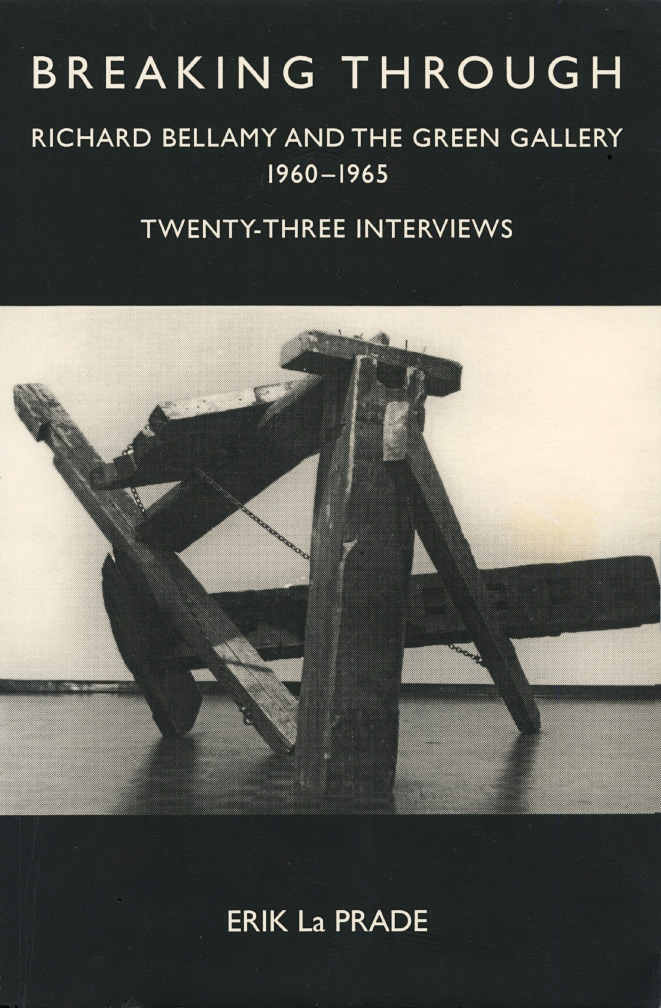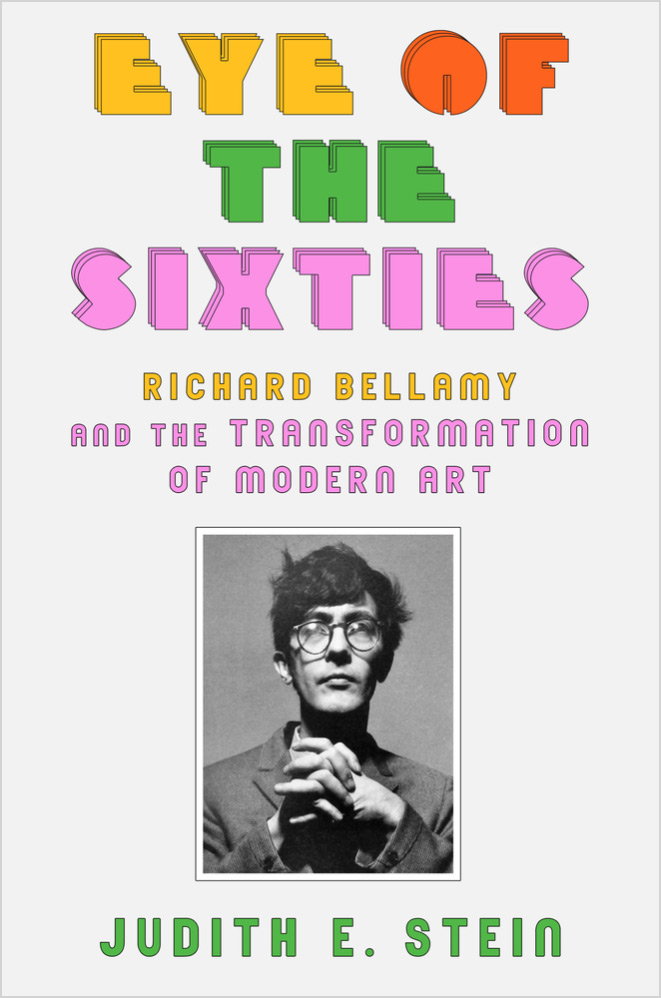Books
Eye of the Sixties:
Richard Bellamy and the Transformation of Modern Art
by Judith E. Stein
A man with a preternatural ability to find emerging artists, Richard Bellamy was one of the first advocates of Pop art, Minimalism and Conceptual art.
The founder and director of the fabled Green Gallery on Fifty-Seventh Street, the witty, poetry-loving art lover became a legend of the avant-garde, showing the work of artists such as Mark di Suvero, Claes Oldenburg, James Rosenquist, Donald Judd and others.
Born to an American father and a Chinese mother in a Cincinnati suburb, Bellamy moved to New York and made a life for himself between the Beat orbits of Provincetown and white-glove events such as the Guggenheim’s opening gala. Outside of the gallery, he supported young artists in myriad ways. Always more concerned with art than with making a profit, Bellamy withdrew when the market mushroomed around him, letting his contemporaries and friends, such as Leo Castelli and Sidney Janis, capitalize on the stars he first discovered. Bellamy’s life story is a fascinating window into the transformation of art in the late twentieth century.
Based on two decades of research and hundreds of interviews with artists, friends, dealers, and lovers, Judith Stein’s Eye of the Sixties recovers the elusive Bellamy and tells the story of a counterculture that became the mainstream.
Bellamy had an understanding of art and a very fine sense of discovery. There was nobody like him, I think. I certainly consider myself his pupil. —Leo Castelli
Serious Bidness:
The Letters of Richard Bellamy
Edited with an Introduction and Notes by Miles Bellamy
This selection of twenty-two letters written by the renowned art dealer Richard Bellamy (1927–1998) highlights his great sensitivity to the needs of the artists he represented, his special brand of humor and his literary predilections. The letters cover the year 1965, when he closed the Green Gallery—a showcase for many who would become the most important artists of the second half of the 20th century—to the last weeks of his life in 1998.
Included are letters to art collectors and patrons such as Virginia Wright, Vera List and A. Alfred Taubman, and letters concerning the artists Mark di Suvero, Walter De Maria and Yayoi Kusama, among others. There are also four letters written to his son, Miles Bellamy, which draw a kind of narrative of their relationship. Miles Bellamy’s introduction and notes expound on that relationship and describe the contexts in which all the letters were written. Appended to the main text are Richard Bellamy’s essay on the painter Myron Stout, the only previously published writing by the dealer, as well as documentation of a posthumous reading of Bellamy’s letters at The New School in October 1998.

Storm King Art Center
153 pages
2005
Richard Bellamy Mark Di Suvero
Storm King Art Center
With texts by Barbara Flynn, Irving Sandler, Barbara Rose, David Collens, H. Peter Stern and Mark di Suvero, “this book is dedicated to Richard Bellamy in celebration of his life and to acknowledge his photographic accomplishments in documenting the sculptures of his friend Mark di Suvero at Storm King and throughout the world.” The photographs are indeed stunning, but the texts flesh out a portrait of Bellamy as a man dedicated to the primacy of the direct perception of art. With additional photographs by Jerry L. Thomspon and Pierre Plattier.

Midmarch Arts Press
213 pages
2010
Breaking Through:
Richard Bellamy and the Green Gallery 1960–1965, Twenty-Three Interviews
Erik La Prade
This book contains interviews about the Green Gallery years with Claes Oldenburg, Lucas Samaras, Pat Passlof, Paula Cooper, Frank Stella, Robert Morris, Jeanie Blake, Richard Bellamy (on Larry Poons) and fourteen others. Reluctant but necessary disclaimer: while an essential document for anyone interested in Bellamiana, the book’s editing is a trainwreck that does a serious injustice to Bellamy and to the interviewees. Typographical errors, non-sequitors and poor transcription mar nearly every page. Our hope is that someone might someday take up the production of a revised edition.


